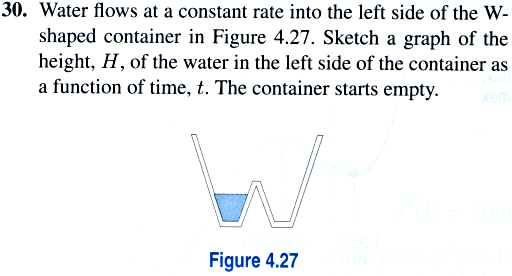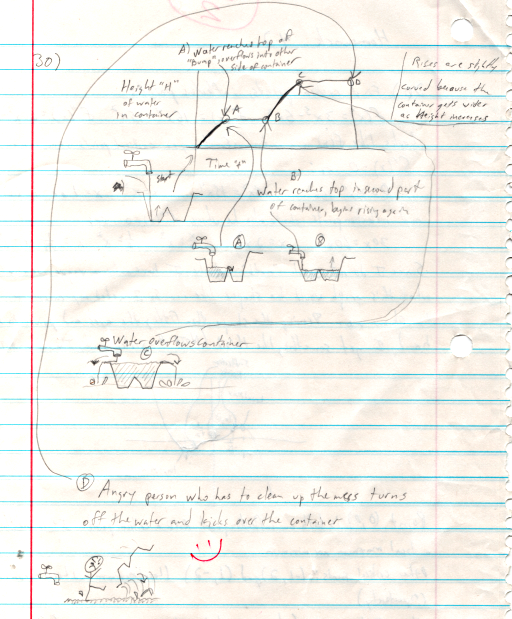 I get some odd Google searches hitting this site. Once in a while, however, I see one asking a question of vital importance and great usefulness to the general public. Today’s brief topic is this query: “Does beer and ice cream make gas?”.
I get some odd Google searches hitting this site. Once in a while, however, I see one asking a question of vital importance and great usefulness to the general public. Today’s brief topic is this query: “Does beer and ice cream make gas?”.
I’m assuming the searcher did not mean gasoline. Biodiesel is all well and good, but who the heck would waste perfectly good beer and ice cream on such a thing? No, I assume the searcher wanted to know if eating these two fine foods together would expose one to the risk of increased flatulence.
Sad to say, the answer is most likely “yes”.
Flatulence gas (from humans, at least) is made up mostly of carbon dioxide and hydrogen gas[1], and for some people (but apparently not all!) methane. It’s worth noting that none of these components have any odor. All of the offensive smell comes from comparatively tiny amounts of sulfur-containing chemicals – most notably plain old Hydrogen Sulfide, and maybe a few molecules of indole-type compounds such as skatole which can make the origin of the stench obvious.
These main gases come from two sources – swallowed gases (air and carbonated beverages) and microbial fermentation. Obviously this is one place beer comes in – the carbonation adds to the amount of gas entering the digestive tract. Secondly, the beer probably contains some amount of remaining malt which some intestinal bacteria, like the yeast that made the beer in the first place, can break down and eat, possibly generating more carbon dioxide in the process. Beer also has small amounts of sulfur compounds in it which give it some of its flavors. It’s possible that some of this sulfur can end up as smelly by-products of microbial action as well.
I tend to assume that problems one might have with ice cream are mainly related to the lactose from the cream. Lactose is actually a combination of two kinds of “simple” sugar molecules linked together in pairs – glucose and galactose. Many unfortunate human beings are cursed with a lack of production of lactase, which is an enzyme that breaks lactose into its two simple sugars which can be easily absorbed and digested. Many bacteria which can live in the human intestine, on the other hand, make their own lactase. If the human eating the ice cream doesn’t make their own lactase so as to absorb and use up the simple sugars, it all gets down to the intestines where the intestinal bacteria can turn it into a major feast. Many bacteria generate a lot of carbon dioxide when eating these sugars, too, and this adds to the gases that build up in the intestine. This is similar to the issue with beans[2] and similarly ‘indigestible’ substances which can appear in food[3] – humans don’t use them up, so the bacteria get it all and make a huge amount of gas in the process of eating it.
Milk also has at least some sulfur in it[4], like just about any protein-containing food, but I’m not sure if it’s enough to add to the smell problem.
So, yes, beer and ice cream probably do make gas.
Incidentally, it seems as though methane production in humans only happens in some people. Methane is only produced by certain kinds of archaea, and not all humans have them growing in their intestines along with the regular bacteria. Don’t quote me on this, but I would tend to suspect that this would actually reduce the amount of gas that actually results in the end. Methanogens actually make the methane out of the other two major flatulence gases: carbon dioxide and hydrogen. I haven’t looked up the biochemistry, but I suspect the other byproduct is water. Since the pressure of a particular bubble of gas (and therefore its volume when your container is stretchable, like an intestine) is dependent on the number of actual molecules of any kind of gas in it, if you have methanogenic archaea in your intestines they should be taking a molecule of carbon dioxide plus more than one molecule of hydrogen gas, and producing just one molecule of methane out of it (plus some liquid water), so where you once had three or more molecules of gas you end up with just one. I’m sure somebody somewhere has done some kind of study on this, maybe I’ll go dig for it at some point. While I’m at it, perhaps I should look at patenting the use of archaeal “natural flora” as a probiotic?…
The picture at the head of this post, incidentally, came from this blog post of odd signs – apparently this one’s from an advertisement for some kind of backache treatment. Still, I couldn’t pass up putting it here…
[1] Furne JK, Levitt MD: “Factors influencing frequency of flatus emission by healthy subjects.” Digestive Diseases and Sciences, 1996; 41:8; pp 1631-1635
[2] Rockland LB, Gardiner BL, Pieczarka D: “Stimulation of Gas Production and Growth of Clostridium perfringens Type A (No. 3624) by Legumes.” Journal of Food Science; 1996; 34 (5); pp 411–414.
[3] Cummings JH, Macfarlane GT, Englyst HN: “Prebiotic digestion and fermentation” American Journal of Clinical Nutrition; 2001; 73(2); pp 415-420
[4] Ramsdell GA, Whittier GO: “Composition of Casein in Milk” Journal of Biological Chemistry; 1944; 154; pp 413-419








 A pair of “barefoot shoes”
A pair of “barefoot shoes” Science is SATAN spelled backwards
Science is SATAN spelled backwards

 I get some odd Google searches hitting this site. Once in a while, however, I see one asking a question of vital importance and great usefulness to the general public. Today’s brief topic is this query: “Does beer and ice cream make gas?”.
I get some odd Google searches hitting this site. Once in a while, however, I see one asking a question of vital importance and great usefulness to the general public. Today’s brief topic is this query: “Does beer and ice cream make gas?”. +
+  =?????
=?????